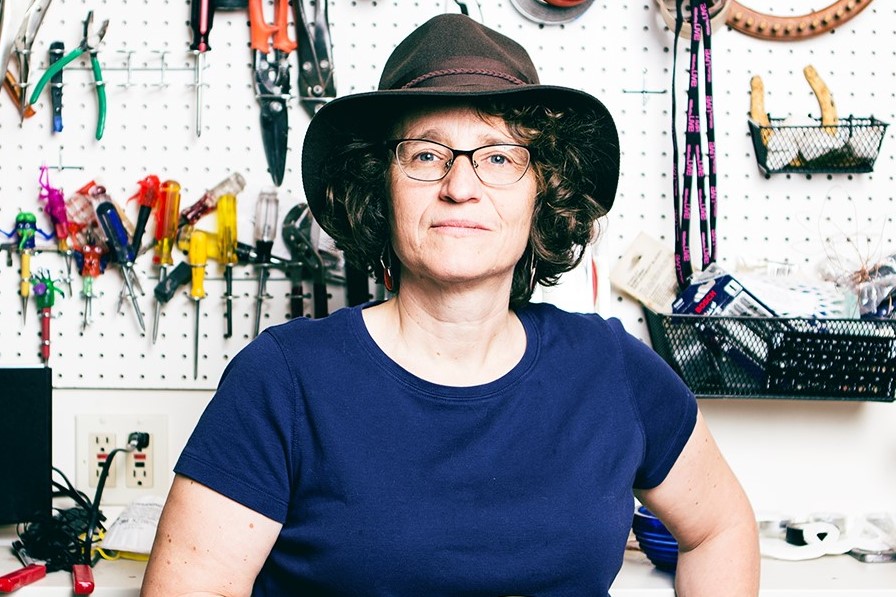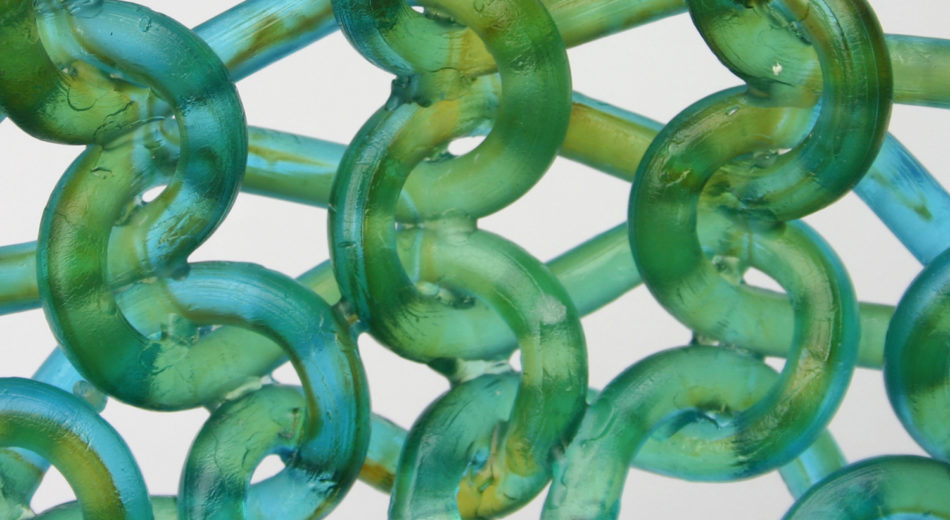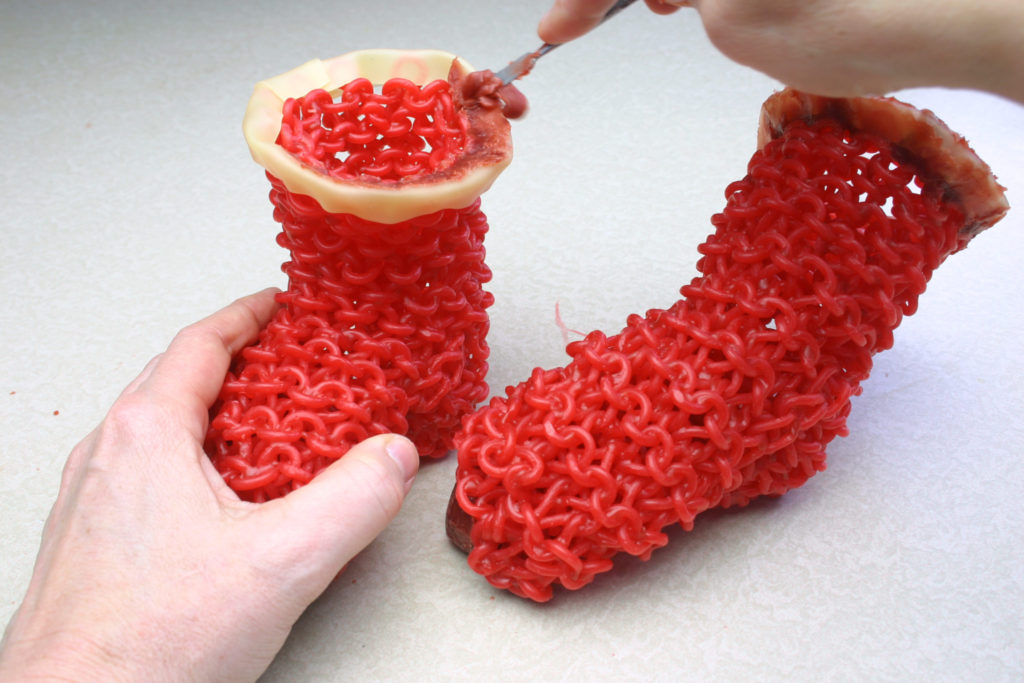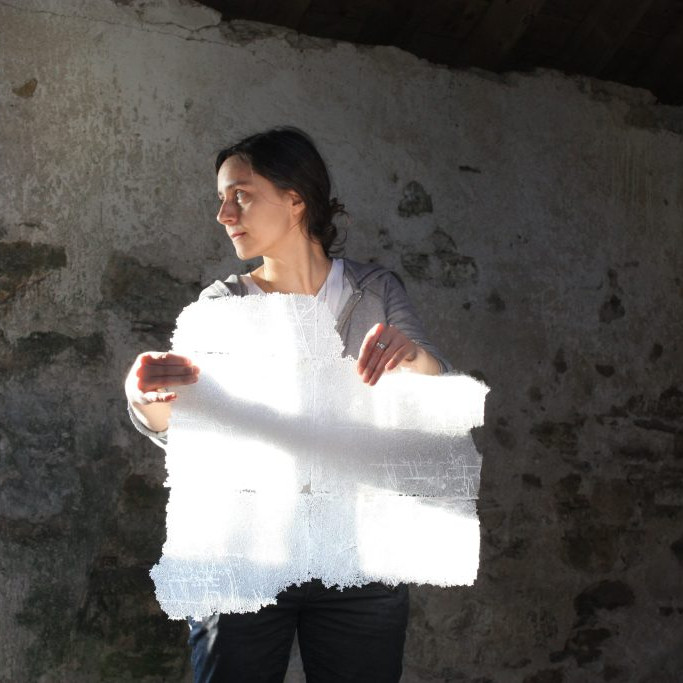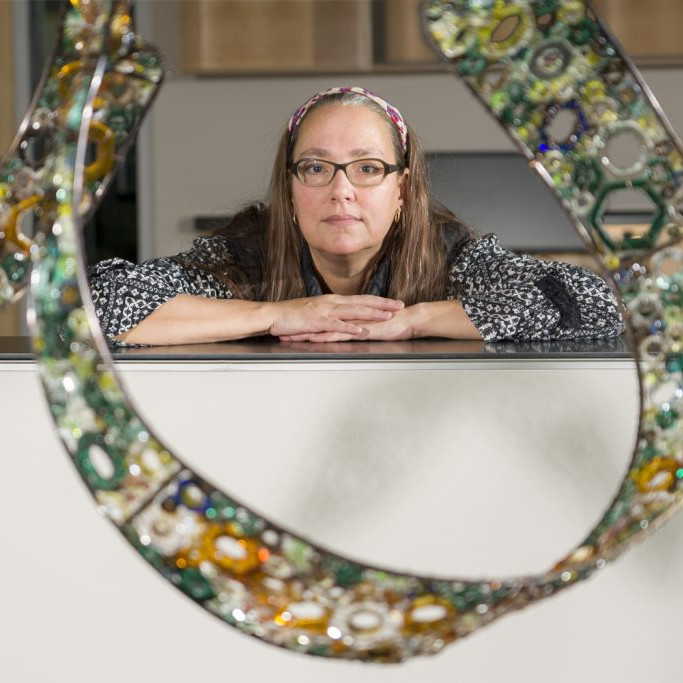Carol Milne Glass Artist - Seattle, WA, USA
Although it seems absurd, as an artist, I am much more interested and involved in the act of creation over the finished product. And it makes me laugh when I think of finished work that celebrates the unfinished.
Zoneone Arts is delighted to bring Carol Milne to you…
Can you explain simply the technique you use to cast your pieces?
The technique is basically lost-wax casting. It’s the same process used in bronze casting and jewellery casting. These are the five basic steps:
- I make something in wax.
Making a wax
- I make a heat tolerant mould (plaster & silica) around the wax.
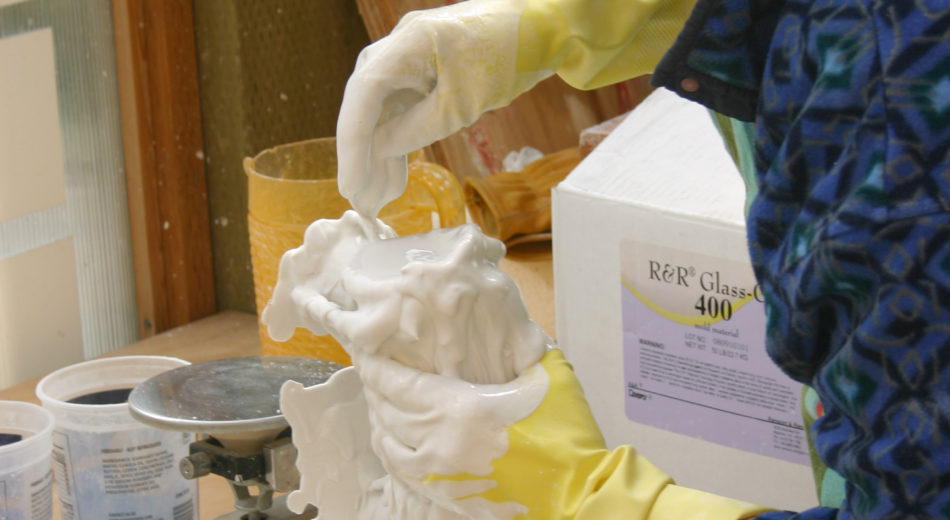
- I steam the wax out of the mould, leaving an empty space where the wax had been.
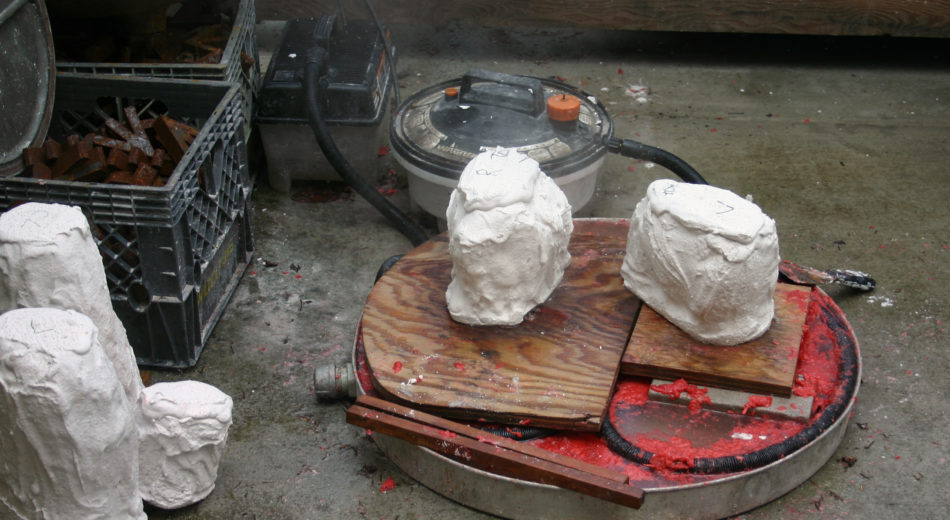 Steaming out moulds
Steaming out moulds
- I put the mould into a kiln and melt glass into the empty space.
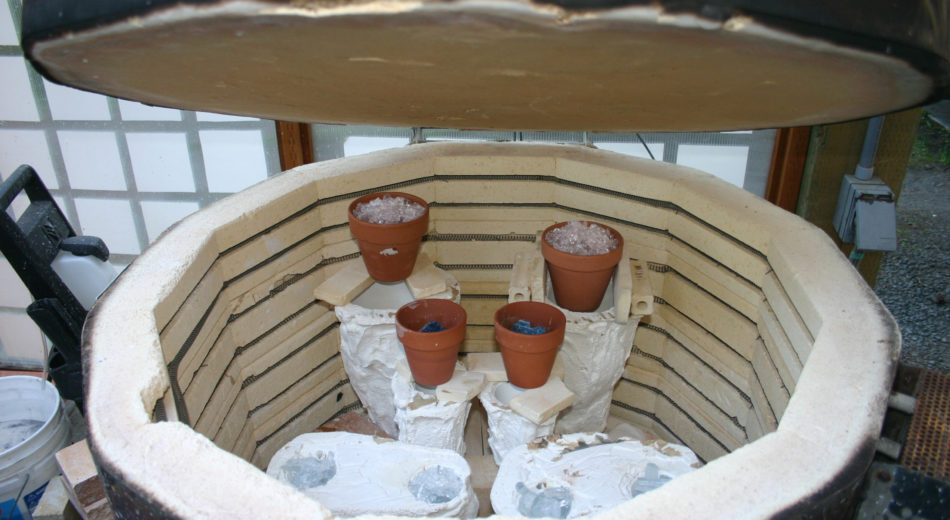
Moulds in the kiln.
- I remove the mould from the kiln and pick off (destroy in the process) the mould material to reveal the glass inside.
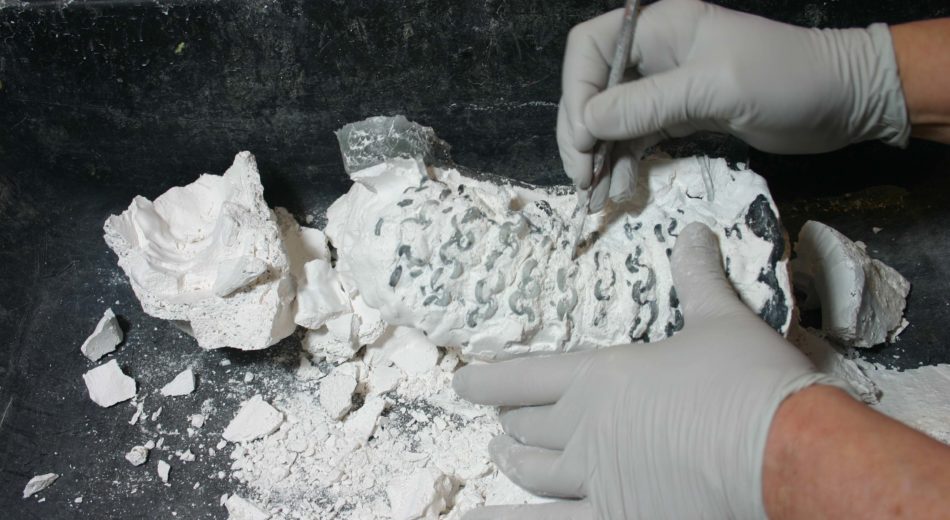 Removing mould
Removing mould
How did you first become aware of this technique?
I was a graduate student in sculpture at the University of Iowa, where we worked primarily in cast iron. Some of the casting was done using the lost wax technique.
How has this technique changed the diversity of your work?
My “twist” on the technique is that I knit the wax before I cast it. This is easier said than done. Since wax doesn’t stretch like yarn does, I can’t knit it with needles.
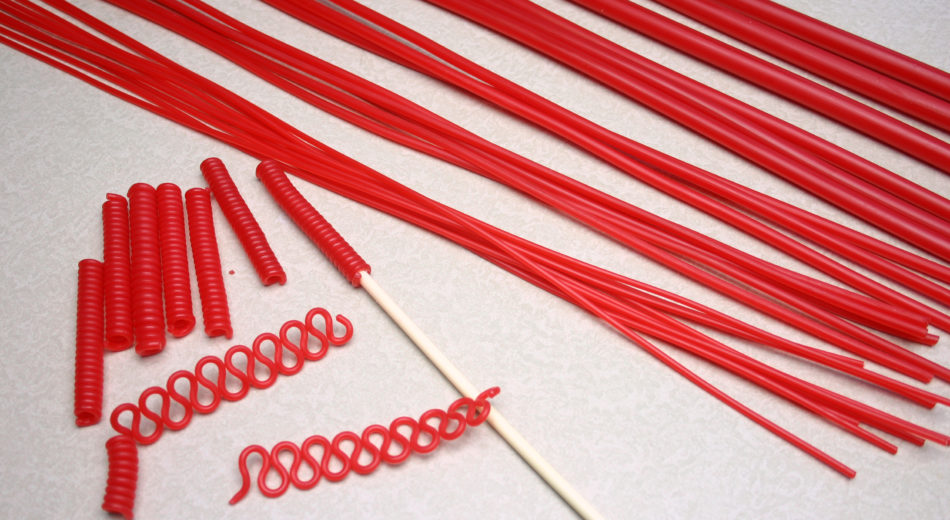 Wax Strands
Wax Strands
I had to come up with a way to form the wax into stitches and then knit them together by hand. The added complication is that knitting is flexible – because the stitches are looped through each other, but are not attached. This is great for fabric, but not so good for glass. If the wax pieces don’t have a strong physical connection, the plaster will fill in the gap. Glass will only flow where there was wax. It will not jump gaps.
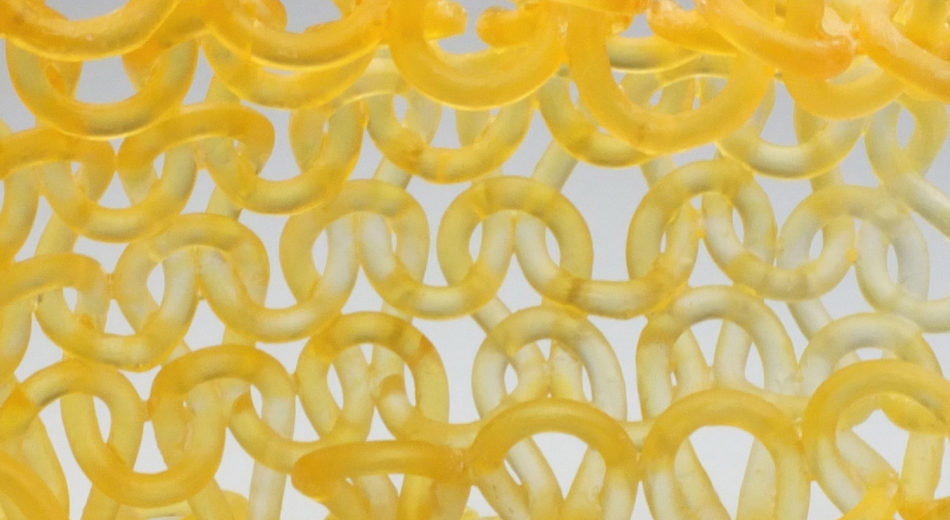 So I solder all the knitted joints together once the knitting is complete. This connects everything, but subtly. So the stitches still appear like they could move without actually being able to do so.
So I solder all the knitted joints together once the knitting is complete. This connects everything, but subtly. So the stitches still appear like they could move without actually being able to do so.
Discuss your first European exhibition?
Preparation:
In this case, the gallerist, Sue Schiepers, wanted a sampling of work from different series I have created. That was easier and less time-consuming than creating a whole new body of work for the exhibition. I did create several new pieces, but not 20.
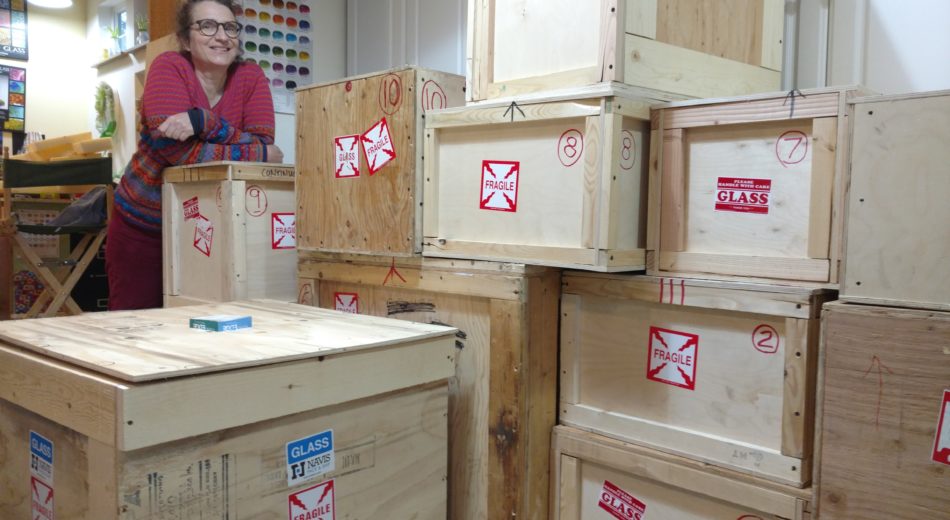 Carol Milne with the Crates for Schiepers Gallery
Carol Milne with the Crates for Schiepers Gallery
Logistics, especially for glass:
As I’m sure you know, glass breaks. To avoid breakage, I build wooden crates for all my work, and individually pack the pieces with 3” of upholstery foam surrounding the glass on all sides. I carve the foam to fit snugly around the work and number the pieces and layers. Assembly instructions with photos document the process, so the person unpacking and repacking has a map to follow to ship the work back or onward safely. This is very time consuming. It took several weeks to pack everything up and put together visual packing instructions for all the boxes. The rest was easy. A truck picked up all the work and it was shipped air freight.
How the exhibition came about:
I was contacted by Sue Schiepers of Schiepers Gallery via email in the summer of 2016. At that point she had not yet opened her gallery, but knew she wanted to show my work. I was hesitant, not knowing anything about her. But we emailed back and forth for a while. I did some research, and spoke with her on the phone. My gut reaction was positive. So I decided it was worth the risk.
Where else has your glass taken you?
I’ve been lucky enough to teach all over the USA, & Canada, and in distant and exotic places like Istanbul, Turkey, New Zealand and Tasmania, Australia.
Expand on the way you conduct your classes?
I have no interest in creating “mini mes”. I teach the basics of knitting and wax working, then let the students “go to town”. It is more challenging to have everyone do their own thing, rather than having a set project, but I find people are happier making what they choose. More importantly, the diversity of projects makes for a richer learning experience overall.
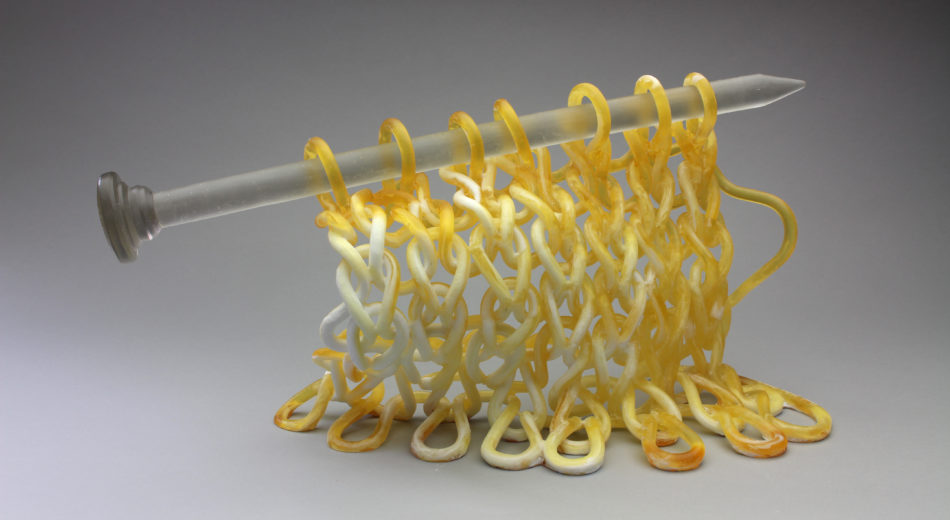
Continuous, 2017
Take one of your knitted pieces with needles and discuss.
In 2013 several key mentors in my life passed away. It started me thinking, “What does it mean to become your own mentor?” A series of hands knitting themselves was the result. The latest iteration of this is “Waterwings”. In it, the hands are knitting themselves, but also buoyed and buoyant, like the water safety gear worn by small children.
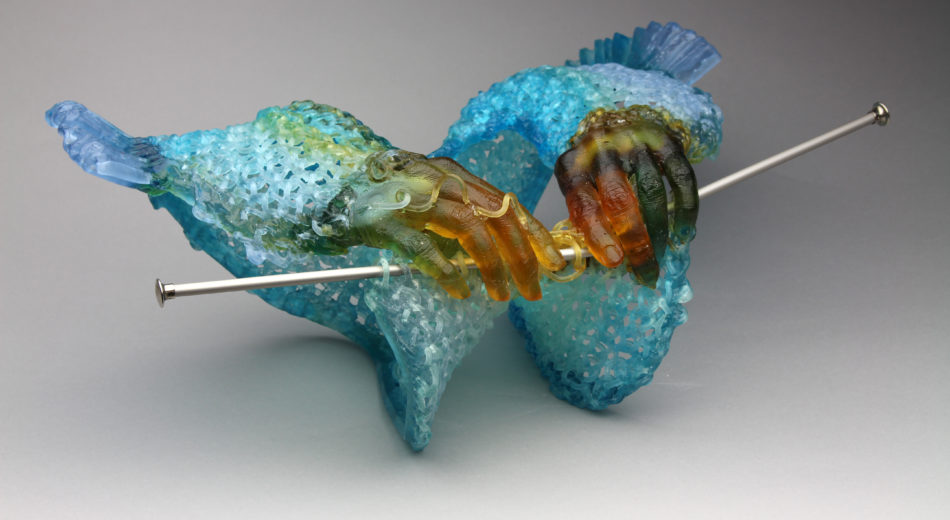 Waterwings
Waterwings
Take away the needles and take another piece and discuss.
“Queen of the Knit” was one of the most unusual and fun projects I completed.
It was a glass costume created for a glass fashion show at the 2016 Glass Art Society conference. I came up with a 2×3” piece which could be repeated and connected. It was based on Entrelac knitting. I connected the pieces with plastic washers and cable ties (so the clothing would still be somewhat flexible and the glass pieces wouldn’t be touching and break). There was a felt backing, with LED lights, Arduino controllers and small portable batteries sandwiched between. You can see a video on of the catwalk (worn by Kait Rhoads) here: https://www.carolmilne.com/glassfashionshow/2016/6/14/queen-of-the-knit
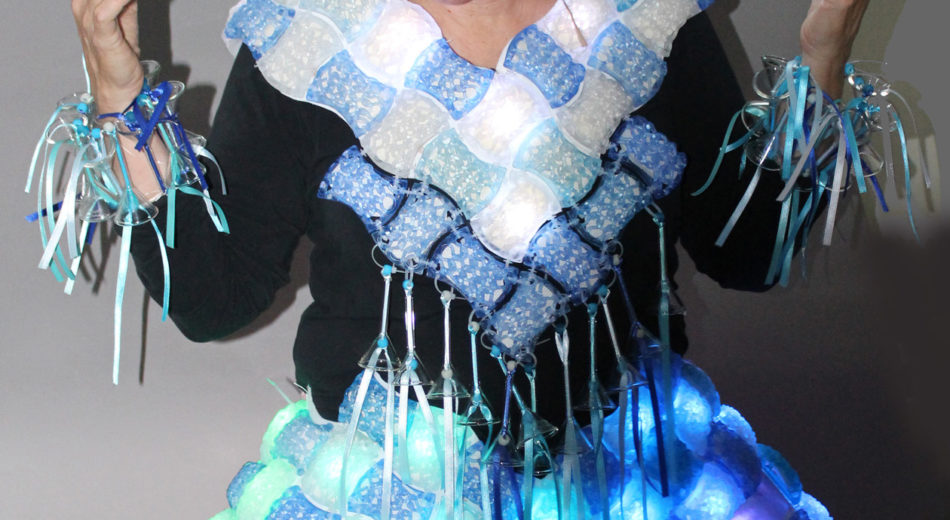 Queen of the Knit
Queen of the Knit
At a very different level comment on your Project ‘In the Name of Love’.
Sometimes art is simply therapy. I was disgusted when the US invaded Iraq in 2003. It was an unjustified war that left tens of thousands of civilians dead, cities demolished, homes destroyed, and lives in tatters. This started me thinking about bombs as gifts.
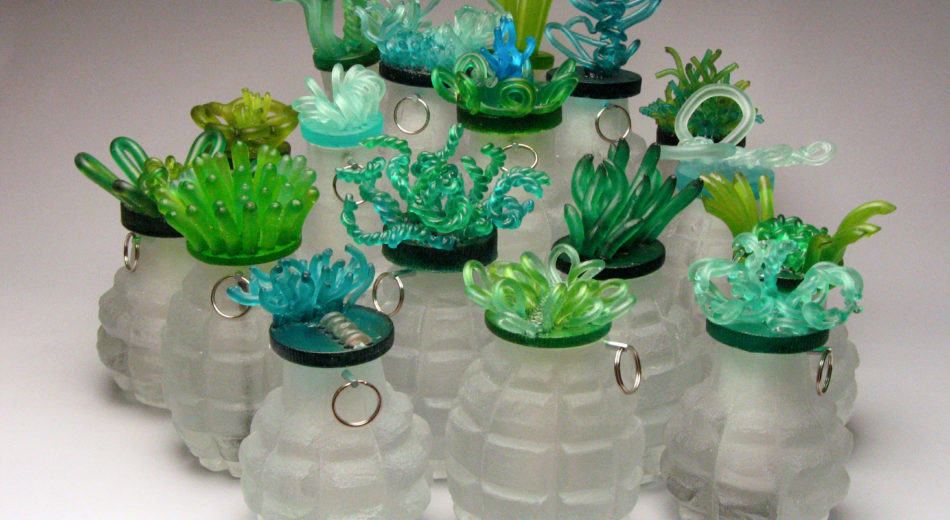
In the Name of Love
A gift has a giver and a receiver. It’s usually given with good intentions, and received with joy. But are good intentions enough? When it’s no longer welcome, is it still a gift?
I call my series of bombs as gifts “In the Name of Love”. The gifts are oversized (the finished pieces range from 8-15” tall) hot-cast grenades with bullet-shaped interiors. Kiln-cast bows adorn the grenades. The bows are held in place with removable pins.
At first glance the grenades look like fancy gift boxes.
Each piece is named (however improbable the name may sound) after an actual U.S military operation in Iraq. For example, “Operation Mr. Roger’s Neighborhood,” “Operation Spring Cleanup”, “Operation Rapier Thrust.”
It’s heavy work (literally and figuratively) with a bow on top for levity.
Explain how your degree in Landscape Architecture has influenced your sculptural work?
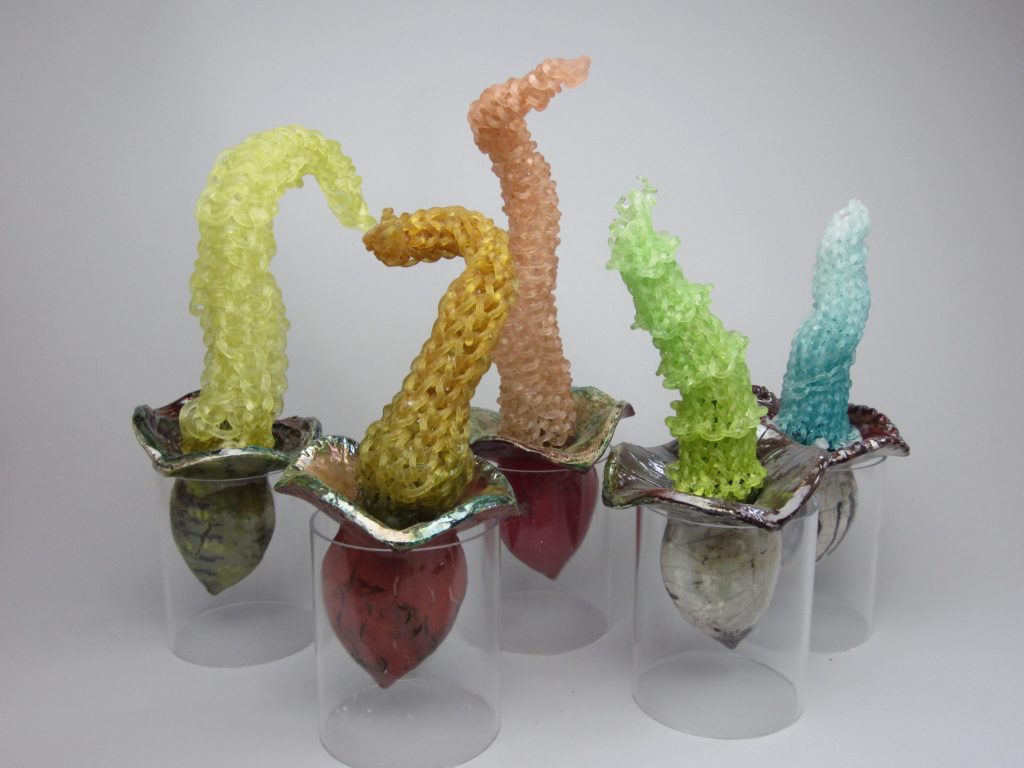
The Conquistadors
Landscape Architecture is essentially the arrangement of objects in 3-dimensional space, so it really differs from sculpture only in the materials used and the scale. I often wish I had the facility to work larger in glass, since I could see some of my work as outdoor installations. In fact, in 2012, I proposed to enlarge one of my series of sculptures (The Conquistadors) into 8 foot tall pieces with knitted rope light instead of glass. I was astonished when the committee asked me to build them – then scrambled to figure out how I would do it. The resultant pieces, “Grow Lights”, are made of hybridized cement, covered with knitted, coloured rope with LED rope lights woven in (the LED rope light was expensive, and too stiff to actually knit).
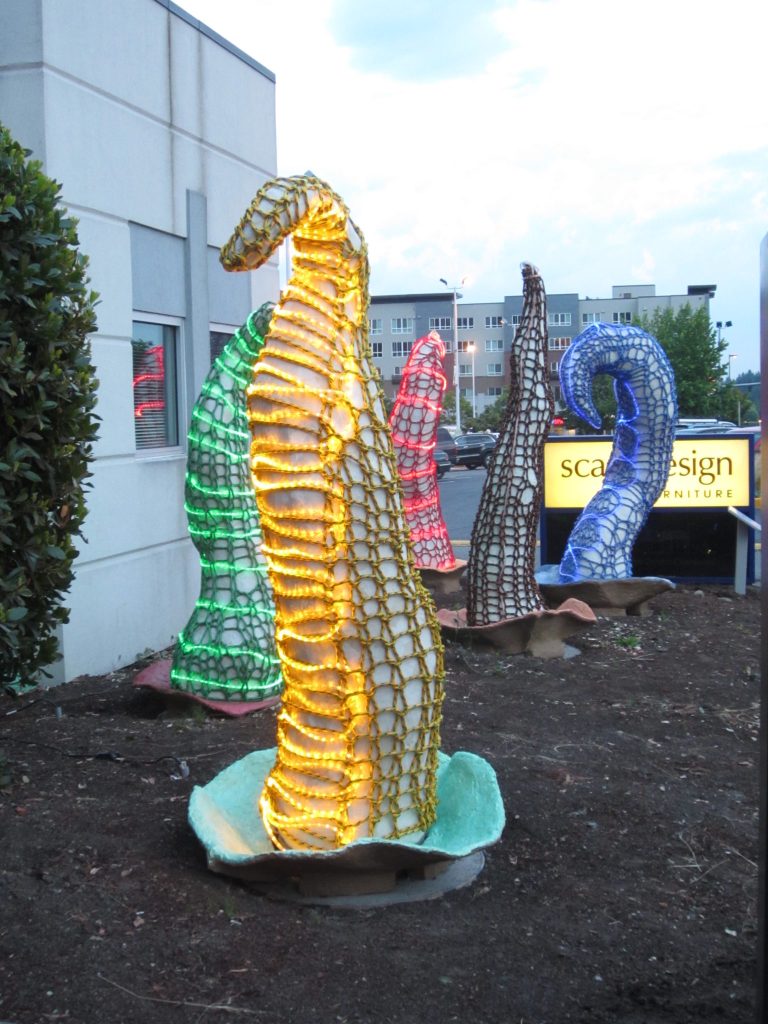
Grow Light
Discuss Gaudi and his influence on your Tessellating Garden tiles.
I took a “Gaudi pilgrimage” to Barcelona, Spain and came upon an hexagonal tile sidewalk with a repeating pattern (designed by Antonio Gaudi) which inspired me to make my own design in glass.
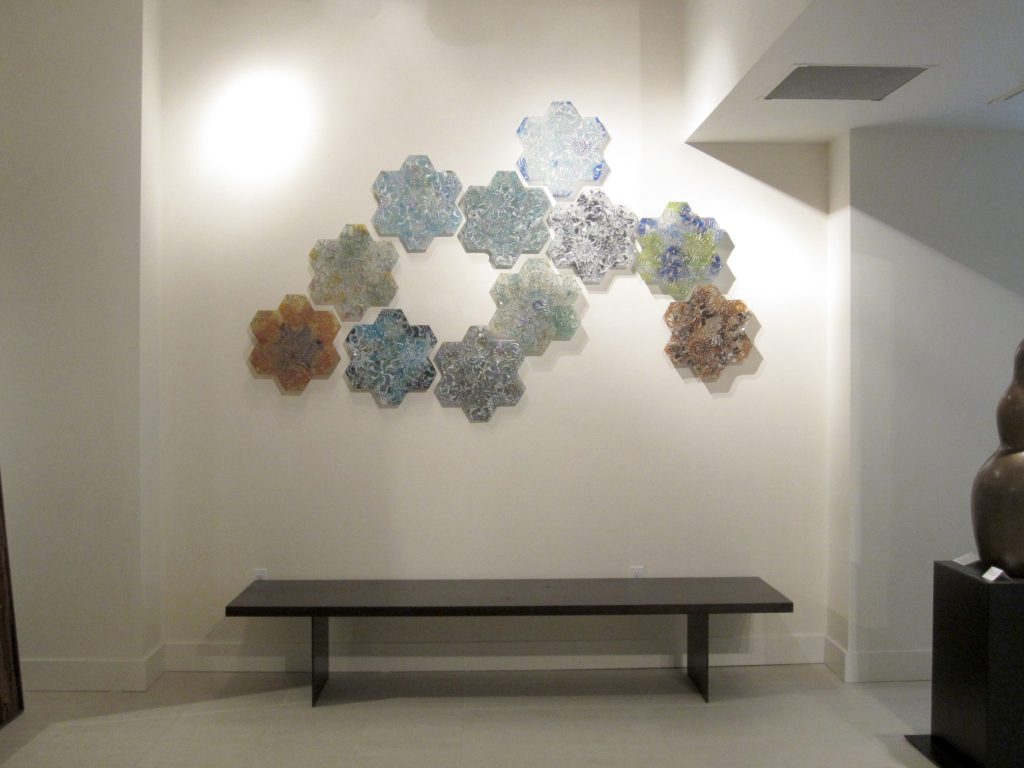
Garden Tiles
The description can get complicated if you don’t understand repeating pattern terminology, but essentially there are three designs, each composed of 1/3 of the hexagon. When you match the designs at the corners, they combine to create a larger design.
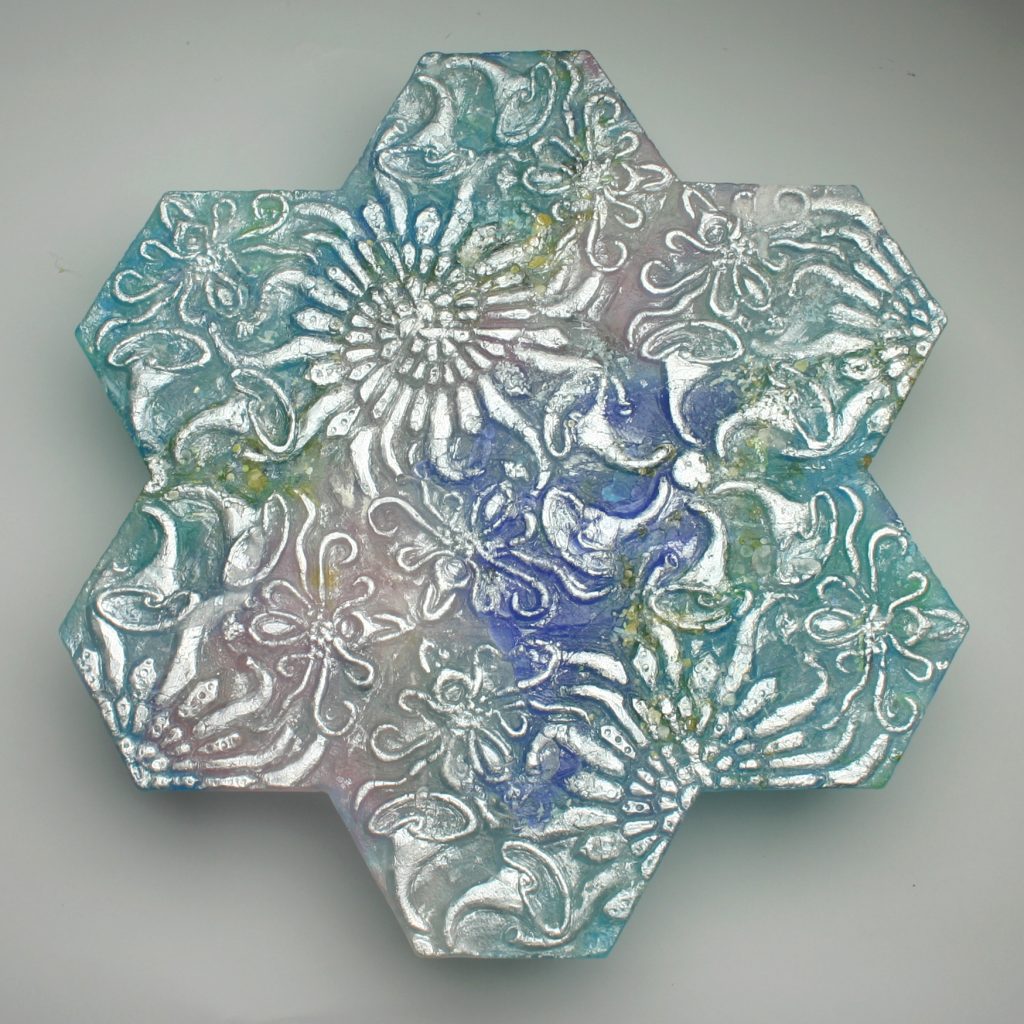
Garden Tile
My “Garden Tiles” are composed of 7 individual hexagonal tiles, so each of the three, plant inspired designs can be seen in full.
Discuss the value of knitting and the binding together in relations to your glass.
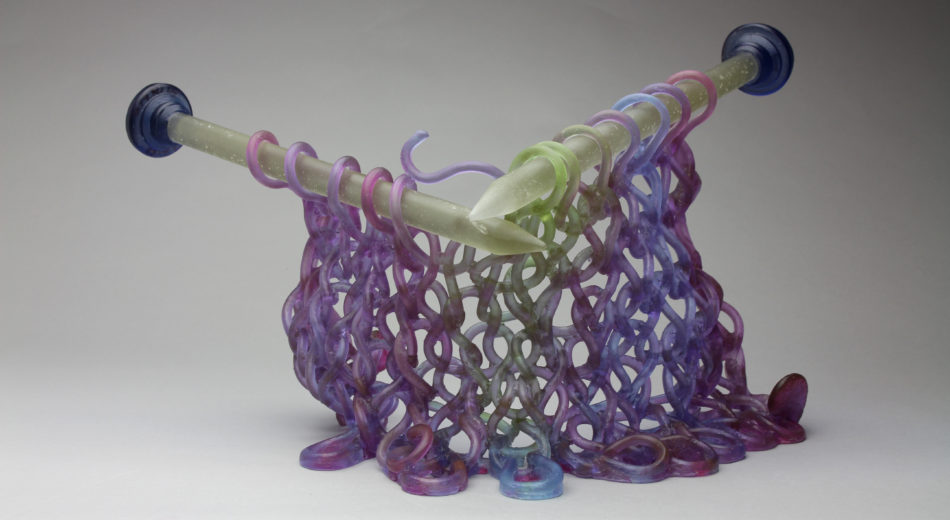 Purple Reigns
Purple Reigns
I see my knitted work as metaphor for social structure. Individual strands are weak and brittle on their own, but deceptively strong when bound together. You can crack or break single threads without the whole structure falling apart. Even when the structure is broken, pieces remain bound together. The connections are what bring strength and integrity to the whole and what keep it intact.
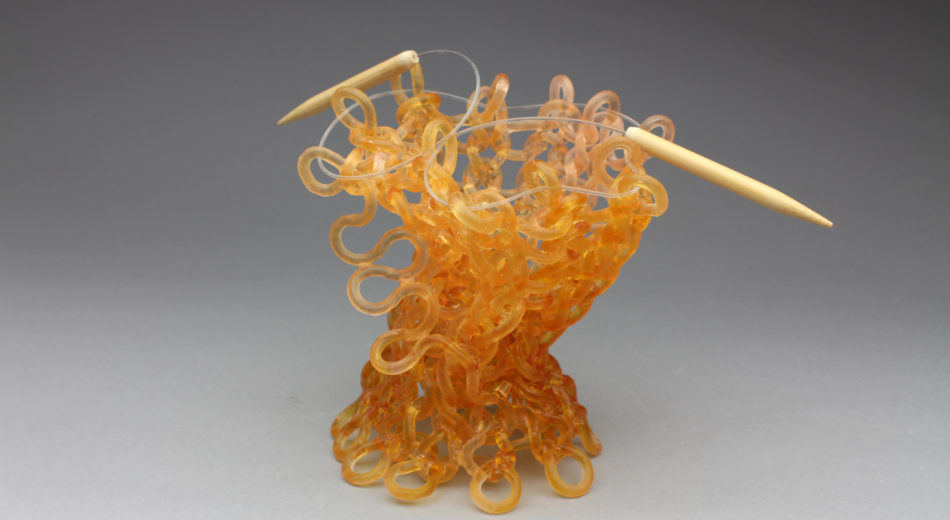 Every Which Way
Every Which Way
Discuss how you use the depth of beauty found in the mundane?
Is knitting mundane? I like the irony of creating a finished piece of art that presents and celebrates a creative act – in this case the process of making/knitting something by hand. Although it seems absurd, as an artist, I am much more interested and involved in the act of creation over the finished product. And it makes me laugh when I think of finished work that celebrates the unfinished.
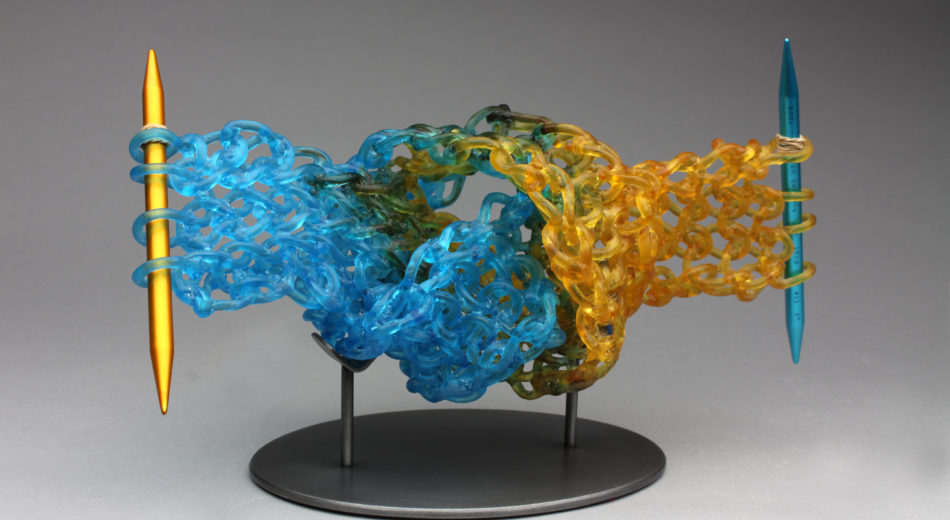
Mix and Match
Contact details:
Carol Milne
carol@carolmilne.com
www.carolmilne.com
Carol Milne, Seattle, WA, USA
Interview by Deborah Blakeley, August, 2017
Think a colleague or friend could benefit from this interview?
Knowledge is one of the biggest assets in any business. So why not forward this on to your friends and colleagues so they too can start taking advantage of the insightful information the artist has given?
Other artists you may be interested in:


